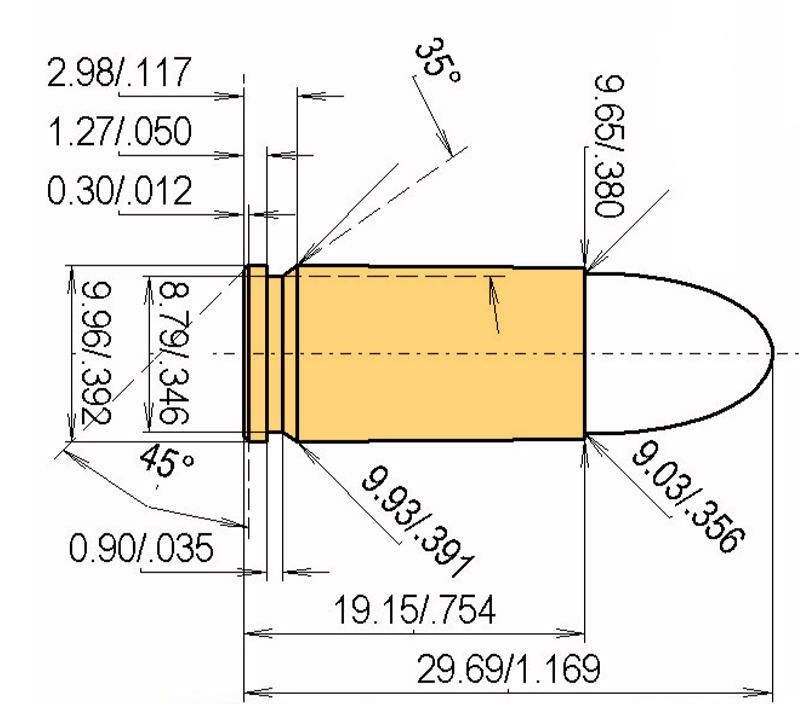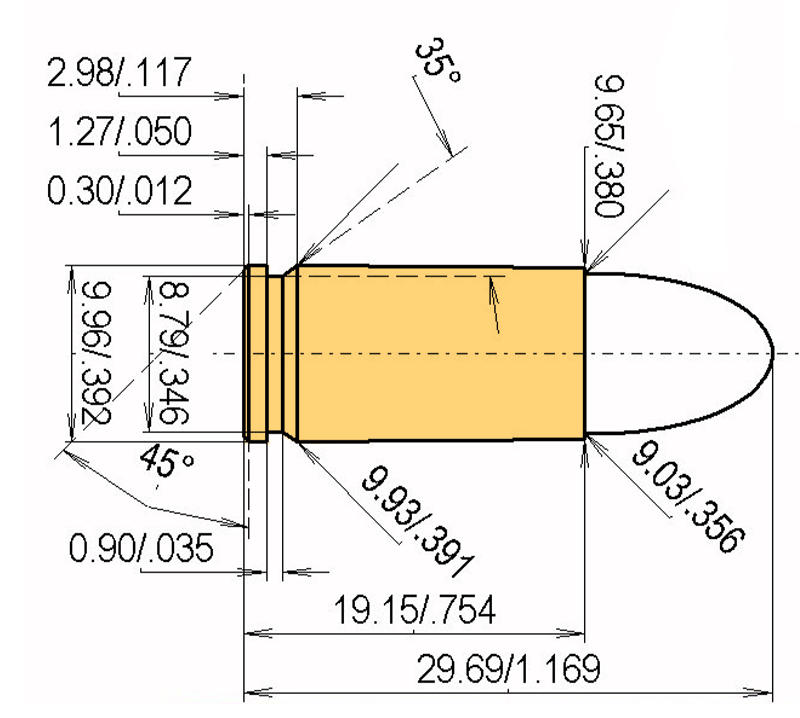Load data for caliber "9 mm Luger (9 mm Parabellum, 9 x 19 mm)"
The 9 mm Luger is a rimless centerfire cartridge developed by German arms manufacturer George Luger in 1902. It is one of the most popular and widely used cartridges in the world and is the basis for many other popular rounds, including the 9x19mm Parabellum and .357 SIG.The 9 mm Luger has a bullet diameter of .355
| Caliber: | 9 mm Luger (9 mm Parabellum, 9 x 19 mm) |
|---|---|
| Cartridge Type: | Pistol/Revolver |
| Bullet Diameter: | 0.355 '' | 9.02 mm |
| Primer Size: | Small Pistol (SP) |
| Max. Case Length (l3): | 0.75'' | 19.15 mm |
| Max .Cartridge Length / OAL: | 1.17'' | 29.69 mm |
| Maximum Standardized Pressure: | 34084.4 psi | 2350 bar |
C.I.P.
The Commission internationale permanente pour l'épreuve des armes à feu portatives ("Permanent International Commission for the Proof of Small Arms" – commonly abbreviated as C.I.P.) is an international organisation which sets standards for safety testing of firearms. (The word portatives ("portable") in the name refers to the fact the C.I.P. tests small arms almost exclusively; it is ordinarily omitted from the English translation of the name.) As of 2015, its members are the national governments of 14 countries, of which 11 are European Union member states. The C.I.P. safeguards that all firearms and ammunition sold to civilian purchasers in member states are safe for the users.
To achieve this, all such firearms are first proof tested at C.I.P. accredited Proof Houses. The same applies for cartridges; at regular intervals, cartridges are tested against the C.I.P. pressure specifications at the ammunition manufacturing plants and at C.I.P. accredited Proof Houses.



